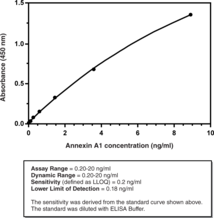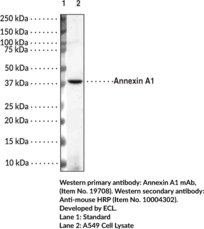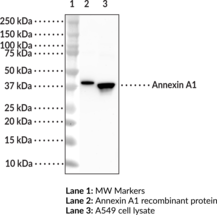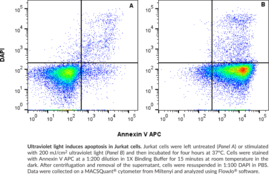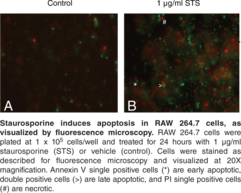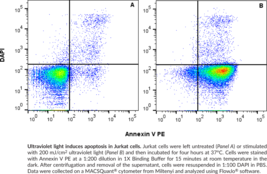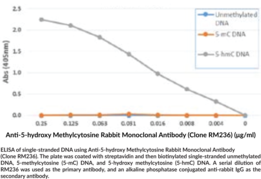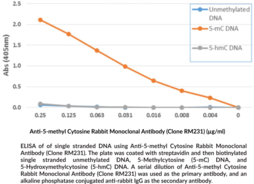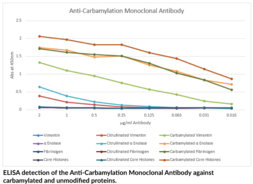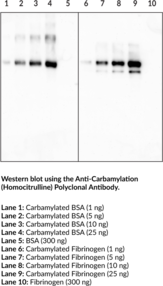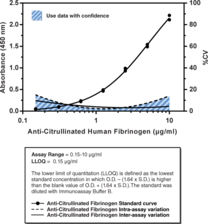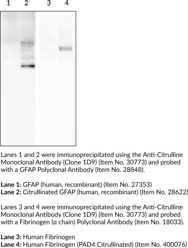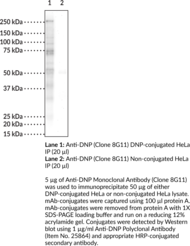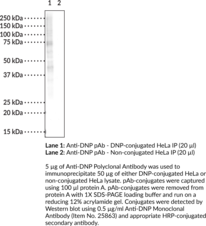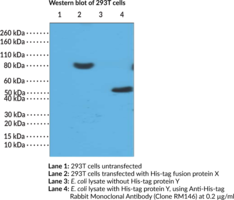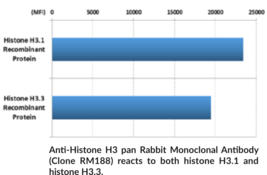Cayman
Showing 9751–9900 of 45550 results
-
Aniracetam (Item No. 17752) is an analytical reference standard that is classified as a nootropic. It can block AMPA receptor desensitization and, consequently, enhance excitatory activity by several fold.{24138,30478} It can also allosterically modulate metabotropic glutamate receptors.{30479} The therapeutic value of aniracetam has been explored in various rodent models for the treatment of cognitive impairment or other CNS disorders.{30479} This product is intended for forensic and research purposes only.
Brand:CaymanSKU:-Available on backorder
Aniracetam (Item No. 17752) is an analytical reference standard that is classified as a nootropic. It can block AMPA receptor desensitization and, consequently, enhance excitatory activity by several fold.{24138,30478} It can also allosterically modulate metabotropic glutamate receptors.{30479} The therapeutic value of aniracetam has been explored in various rodent models for the treatment of cognitive impairment or other CNS disorders.{30479} This product is intended for forensic and research purposes only.
Brand:CaymanSKU:-Available on backorder
Anisodamine is a natural tropane alkaloid shown to be a weak antagonist of α1-adrenoceptors, blocking WB-4101 and clonidine (Item No. 15949) binding in brain membrane preparations with pKi values of 2.63 and 1.61, respectively.{31352} Anisodamine also has antioxidant effects that may protect against free radical-induced cellular damage.{31351} Anisodamine is predominantly found in the roots of A. tanguticus, which is used in traditional Chinese medicine for topical applications.{31350}
Brand:CaymanSKU:19650 -Available on backorder
Anisodamine is a natural tropane alkaloid shown to be a weak antagonist of α1-adrenoceptors, blocking WB-4101 and clonidine (Item No. 15949) binding in brain membrane preparations with pKi values of 2.63 and 1.61, respectively.{31352} Anisodamine also has antioxidant effects that may protect against free radical-induced cellular damage.{31351} Anisodamine is predominantly found in the roots of A. tanguticus, which is used in traditional Chinese medicine for topical applications.{31350}
Brand:CaymanSKU:19650 -Available on backorder
Anisodamine is a natural tropane alkaloid shown to be a weak antagonist of α1-adrenoceptors, blocking WB-4101 and clonidine (Item No. 15949) binding in brain membrane preparations with pKi values of 2.63 and 1.61, respectively.{31352} Anisodamine also has antioxidant effects that may protect against free radical-induced cellular damage.{31351} Anisodamine is predominantly found in the roots of A. tanguticus, which is used in traditional Chinese medicine for topical applications.{31350}
Brand:CaymanSKU:19650 -Available on backorder
Anisodamine is a natural tropane alkaloid shown to be a weak antagonist of α1-adrenoceptors, blocking WB-4101 and clonidine (Item No. 15949) binding in brain membrane preparations with pKi values of 2.63 and 1.61, respectively.{31352} Anisodamine also has antioxidant effects that may protect against free radical-induced cellular damage.{31351} Anisodamine is predominantly found in the roots of A. tanguticus, which is used in traditional Chinese medicine for topical applications.{31350}
Brand:CaymanSKU:19650 -Available on backorder
Anisomycin is a pyrrolidine antibiotic produced by S. griseolus that inhibits protein and DNA synthesis.{20427} It activates stress-activated protein kinase, MAP kinase, and other signal transduction pathways. At 30 mg/kg, anisomycin displays immunosuppressive activity superior to that of Cyclosporine A, blocking T cell proliferation in skin-transplanted mice.{20426} Through a caspase-8-dependent pathway, anisomycin acts as a potent and specific anoikis sensitizer of malignant epithelial cells resistant to apoptosis upon detachment from the ECM, preventing distal tumor formation in a mouse model of prostate cancer metastases.{20428}
Brand:CaymanSKU:11308 - 10 mgAvailable on backorder
Anisomycin is a pyrrolidine antibiotic produced by S. griseolus that inhibits protein and DNA synthesis.{20427} It activates stress-activated protein kinase, MAP kinase, and other signal transduction pathways. At 30 mg/kg, anisomycin displays immunosuppressive activity superior to that of Cyclosporine A, blocking T cell proliferation in skin-transplanted mice.{20426} Through a caspase-8-dependent pathway, anisomycin acts as a potent and specific anoikis sensitizer of malignant epithelial cells resistant to apoptosis upon detachment from the ECM, preventing distal tumor formation in a mouse model of prostate cancer metastases.{20428}
Brand:CaymanSKU:11308 - 100 mgAvailable on backorder
Anisomycin is a pyrrolidine antibiotic produced by S. griseolus that inhibits protein and DNA synthesis.{20427} It activates stress-activated protein kinase, MAP kinase, and other signal transduction pathways. At 30 mg/kg, anisomycin displays immunosuppressive activity superior to that of Cyclosporine A, blocking T cell proliferation in skin-transplanted mice.{20426} Through a caspase-8-dependent pathway, anisomycin acts as a potent and specific anoikis sensitizer of malignant epithelial cells resistant to apoptosis upon detachment from the ECM, preventing distal tumor formation in a mouse model of prostate cancer metastases.{20428}
Brand:CaymanSKU:11308 - 5 mgAvailable on backorder
Anisomycin is a pyrrolidine antibiotic produced by S. griseolus that inhibits protein and DNA synthesis.{20427} It activates stress-activated protein kinase, MAP kinase, and other signal transduction pathways. At 30 mg/kg, anisomycin displays immunosuppressive activity superior to that of Cyclosporine A, blocking T cell proliferation in skin-transplanted mice.{20426} Through a caspase-8-dependent pathway, anisomycin acts as a potent and specific anoikis sensitizer of malignant epithelial cells resistant to apoptosis upon detachment from the ECM, preventing distal tumor formation in a mouse model of prostate cancer metastases.{20428}
Brand:CaymanSKU:11308 - 50 mgAvailable on backorder
Cayman’s Annexin A1 (human) ELISA Kit is a sandwich assay which can be used to measure human annexin A1 in tissue culture media, serum and plasma. The standard curve spans the range of 0.20 – 20 ng/ml. Annexin A1 is a natural anti-inflammatory protein produced by neutrophils and monocytes. The glucocorticoid-induced production and release of annexin A1 is the primary means by which glucocorticoids function as anti-inflammatory agents. Annexin A1 inhibits the synthesis of pro-inflammatory eicosanoids by suppressing the function of secretory phospholipase A2 (sPLA2). This, in turn, limits the recruitment of neutrophils into inflammatory sites and down-regulates the production of pro-inflammatory mediators by those neutrophils that enter inflammatory sites. Annexin A1 also functions in the resolution of inflammation by inducing neutrophil apoptosis, and promoting neutrophil clearance (efferocytosis) by macrophages. The pro-resolving functions of annexin A1 are mediated via binding to FPR2/ALX, a receptor it shares with the specific pro-resolving mediators lipoxin A4 (LXA4) and resolvin D1 (RvD1).
Brand:CaymanSKU:501550 - 96 wellsAvailable on backorder
Immunogen: Full length recombinant Annexin A1 protein • Host: Mouse • Species Reactivity: (+) Human • Applications: ELISA, WB
Brand:CaymanSKU:19707- 500 µgAvailable on backorder
Immunogen: Full length recombinant Annexin A1 protein • Host: Mouse • Species Reactivity: (+) Human • Applications: ELISA, WB
Brand:CaymanSKU:19707- 500 µgAnnexins are a superfamily of 13 proteins sharing a high degree of homology. They have in common a core C-terminal domain containing calcium and phospholipid binding motifs, allowing most of them to bind to phospholipid membranes in a calcium-dependent manner. The N-terminal domains vary between family members and provide a unique function.{30992}Annexin A1 is an endogenous mediator of inflammation, promoting resolution in a number of ways. Normally expressed in intracellular compartments, it is drawn to the cell membrane and both induced and externalized by glucocorticoid response pathways.{30993,30994} The glucocorticoid-induced production and release of annexin A1 is the primary means by which glucocorticoids function as anti-inflammatory agents. Annexin A1 inhibits the synthesis of pro-inflammatory eicosanoids by suppressing the function of sPLA2. This, in turn, limits the recruitment of neutrophils into inflammatory sites and downregulates the production of pro-inflammatory mediators by those neutrophils that enter inflammatory sites.{30995} Meanwhile, proteolytic fragments generated in response to increased expression are implicated in producing a marker for phagocytosis.{30996} Annexin A1 also functions in the resolution of inflammation by inducing neutrophil apoptosis, and promoting neutrophil clearance (efferocytosis) by macrophages. The pro-resolving functions of annexin A1 are mediated via binding to FPR2/ALX, a receptor it shares with the specific pro-resolving mediators lipoxin A4 (Item No. 90410) and resolvin D1 (Item No. 10012554).{30995} The molecule’s regulatory role has led to investigation of the downstream effects of annexin A1, including cancer, adaptive immunity, and wound repair.{30997,30998,30999} The predicted size of annexin A1 is 38.7 kDa and Cayman’s Annexin A1 Monoclonal Antibody (Clone 3F5) detects a size 39 kDa band via western blot.
Brand:CaymanSKU:19707 - 500 µgAvailable on backorder
Immunogen: Full length recombinant annexin A1 protein • Host: Rabbit • Species Reactivity: (+) Human Annexin A1 • Application: ELISA, IP, and WB
Brand:CaymanSKU:19708- 100 µgAvailable on backorder
Immunogen: Full length recombinant annexin A1 protein • Host: Rabbit • Species Reactivity: (+) Human Annexin A1 • Application: ELISA, IP, and WB
Brand:CaymanSKU:19708- 100 µgAnnexins are a superfamily of 13 proteins sharing a high degree of homology. They have in common a core C-terminal domain containing calcium and phospholipid binding motifs, allowing most of them to bind to phospholipid membranes in a calcium-dependent manner. The N-terminal domains vary between family members and provide unique function.{30992} Annexin A1 is an endogenous mediator of inflammation, promoting resolution in a number of ways. Normally expressed in intracellular compartments, it is drawn to the cell membrane and both induced and externalized by glucocorticoid response pathways.{30993,30994} The glucocorticoid-induced production and release of annexin A1 is the primary means by which glucocorticoids function as anti-inflammatory agents. Annexin A1 inhibits the synthesis of pro-inflammatory eicosanoids by suppressing the function of sPLA2. This, in turn, limits the recruitment of neutrophils into inflammatory sites and down-regulates the production of pro-inflammatory mediators by those neutrophils that enter inflammatory sites.{30995} Meanwhile, proteolytic fragments generated in response to increased expression are implicated in producing a marker for phagocytosis.{30996} Annexin A1 also functions in the resolution of inflammation by inducing neutrophil apoptosis, and promoting neutrophil clearance (efferocytosis) by macrophages. The pro-resolving functions of annexin A1 are mediated via binding to FPR2/ALX, a receptor it shares with the specific pro-resolving mediators lipoxin A4 (LXA4; Item No. 90410) and resolvin D1 (RvD1; Item No. 10012554).{30995} The molecule’s regulatory role has led to investigation of the downstream effects of annexin A1, including cancer, adaptive immunity, and wound repair.{30997,30998,30999} The predicted size of annexin A1 is 38.7 kDa and Cayman’s Annexin A1 Polyclonal Antibody detects a size 39 kDa band via Western blot and Immunoprecipitation.
Brand:CaymanSKU:19708 - 100 µgAvailable on backorder
Cayman’s Annexin V APC Assay Kit employs an APC-conjugated annexin V as a probe for phosphatidylserine on the outer membrane of apoptotic cells. DAPI is used as a marker of cell membrane permeability seen in very late apoptotic or necrotic cells. This kit is valuable for researchers looking to assess the degree of apoptosis induced by experimental compounds, and can be useful in pharmacology, immunology, cancer, or physiology research.
Brand:CaymanSKU:601410 - 100 testsAvailable on backorder
One of the hallmarks of the early stages of apoptosis is the redistribution of membrane phospholipids such as phosphatidylserine and phosphatidylethanolamine from the inner to outer leaflet of the membrane bilayer where they are exposed on the cell surface. Externalization of phosphatidylserine residues to the outer plasma membrane leaflet allows their detection via their high affinity for annexin V, a phospholipid binding protein. Cayman’s Annexin V Assay Kit employs a FITC-conjugated Annexin V as a probe for phosphatidylserine on the outer membrane of apoptotic cells. Apoptotic cells bound with fluorochrome-labeled Annexin V can be visualized using fluorescence microscopy or flow cytometry. The reagents provided in the kit are sufficient to run 500 samples when using a 96-well plate format.
Brand:CaymanSKU:600300 - 100 testsAvailable on backorder
Cayman’s Annexin V PE Assay Kit employs a PE-conjugated annexin V as a probe for phosphatidylserine on the outer membrane of apoptotic cells. DAPI is used as a marker of cell membrane permeability seen in very late apoptotic or necrotic cells. This kit is valuable for researchers looking to assess the degree of apoptosis induced by experimental compounds, and can be useful in pharmacology, immunology, cancer, or physiology research.
Brand:CaymanSKU:601420 - 100 testsAvailable on backorder
Annonacin is a potent and lipophilic acetogenin from A. muricata that inhibits mitochondrial complex I (IC50 = 54.8 nM).{37049},{37050} Annonacin induces ATP depletion, tau pathologies, and dopaminergic cell death in rats (EC50s = 134, 44.1, and 60.8 nM, respectively). Quantities of annonacin in the fruit and teas made from leaves of A. muricata are such that a cumulative dose sufficient to induce murine neurodegeneration can be attained in humans by regular consumption within one year. This implicates annonacin in the etiology of taupathologies identified in regions of A. muricata consumption. Annonacin also reduces cell survival (ED50 = 0.31 µM in MCF-7 cells) and decreases MCF-7 xenograft tumor size in nude mice at a dose of 50 mg/kg per day.{37051}
Brand:CaymanSKU:22415 -Out of stock
Annonacin is a potent and lipophilic acetogenin from A. muricata that inhibits mitochondrial complex I (IC50 = 54.8 nM).{37049},{37050} Annonacin induces ATP depletion, tau pathologies, and dopaminergic cell death in rats (EC50s = 134, 44.1, and 60.8 nM, respectively). Quantities of annonacin in the fruit and teas made from leaves of A. muricata are such that a cumulative dose sufficient to induce murine neurodegeneration can be attained in humans by regular consumption within one year. This implicates annonacin in the etiology of taupathologies identified in regions of A. muricata consumption. Annonacin also reduces cell survival (ED50 = 0.31 µM in MCF-7 cells) and decreases MCF-7 xenograft tumor size in nude mice at a dose of 50 mg/kg per day.{37051}
Brand:CaymanSKU:22415 -Out of stock
Ansamitocin P-3 is a microtubule depolymerizing agent that can be isolated from culture broths of certain Gram-positive bacteria.{32392,32391} It binds tubulin (Kd = 1.3 µM), depolymerizes microtubules in both interphase and mitosis, and perturbs chromosome segregation.{32393} Ansamitocin P-3 also activates the spindle checkpoint surveillance proteins Mad2 and BubR1, blocking cell cycling during mitosis.{32393} It inhibits the growth of cancer cells in culture and significantly suppresses the growth of several cancer tumors in mice, prolonging survival time.{32392,32393}
Brand:CaymanSKU:20538 -Available on backorder
Ansamitocin P-3 is a microtubule depolymerizing agent that can be isolated from culture broths of certain Gram-positive bacteria.{32392,32391} It binds tubulin (Kd = 1.3 µM), depolymerizes microtubules in both interphase and mitosis, and perturbs chromosome segregation.{32393} Ansamitocin P-3 also activates the spindle checkpoint surveillance proteins Mad2 and BubR1, blocking cell cycling during mitosis.{32393} It inhibits the growth of cancer cells in culture and significantly suppresses the growth of several cancer tumors in mice, prolonging survival time.{32392,32393}
Brand:CaymanSKU:20538 -Available on backorder
Ansamitocin P-3 is a microtubule depolymerizing agent that can be isolated from culture broths of certain Gram-positive bacteria.{32392,32391} It binds tubulin (Kd = 1.3 µM), depolymerizes microtubules in both interphase and mitosis, and perturbs chromosome segregation.{32393} Ansamitocin P-3 also activates the spindle checkpoint surveillance proteins Mad2 and BubR1, blocking cell cycling during mitosis.{32393} It inhibits the growth of cancer cells in culture and significantly suppresses the growth of several cancer tumors in mice, prolonging survival time.{32392,32393}
Brand:CaymanSKU:20538 -Available on backorder
Ansamitocin P-3 is a microtubule depolymerizing agent that can be isolated from culture broths of certain Gram-positive bacteria.{32392,32391} It binds tubulin (Kd = 1.3 µM), depolymerizes microtubules in both interphase and mitosis, and perturbs chromosome segregation.{32393} Ansamitocin P-3 also activates the spindle checkpoint surveillance proteins Mad2 and BubR1, blocking cell cycling during mitosis.{32393} It inhibits the growth of cancer cells in culture and significantly suppresses the growth of several cancer tumors in mice, prolonging survival time.{32392,32393}
Brand:CaymanSKU:20538 -Available on backorder
Ansatrienin A is an ansamycin antibiotic and antifungal agent first isolated from S. collinus and S. rishiriensis.{37029,37026} In fetal rat long bones, it is an inhibitor of parathyroid hormone-induced calcium release (IC50 = 64 nM), which is a measure of bone resorption, and pp60c-srcM kinase (IC50 = 100 nM).{37028} It also inhibits TNF-α-induced expression of intercellular adhesion molecule-1 (ICAM-1; IC50 = 570 nM).{37025} Early in vitro studies showed that ansatrienin A potentiates the chemotherapeutic action of 5-fluorouracil (Item No. 14416), cisplatin (Item No. 13119), bleomycin (Item No. 13877), mitomycin C (Item No. 11435), and 6-mercaptopurine.{37027} It is an oxidized form of ansatrienin B (Item No. 21996).{37026}
Brand:CaymanSKU:21995 -Out of stock
Ansatrienin A is an ansamycin antibiotic and antifungal agent first isolated from S. collinus and S. rishiriensis.{37029,37026} In fetal rat long bones, it is an inhibitor of parathyroid hormone-induced calcium release (IC50 = 64 nM), which is a measure of bone resorption, and pp60c-srcM kinase (IC50 = 100 nM).{37028} It also inhibits TNF-α-induced expression of intercellular adhesion molecule-1 (ICAM-1; IC50 = 570 nM).{37025} Early in vitro studies showed that ansatrienin A potentiates the chemotherapeutic action of 5-fluorouracil (Item No. 14416), cisplatin (Item No. 13119), bleomycin (Item No. 13877), mitomycin C (Item No. 11435), and 6-mercaptopurine.{37027} It is an oxidized form of ansatrienin B (Item No. 21996).{37026}
Brand:CaymanSKU:21995 -Out of stock
Ansatrienin B is an ansamycin antibiotic and antifungal agent first isolated from S. collinus and S. rishiriensis.{37029},{37026} In fetal rat long bones, it is an inhibitor of parathyroid hormone-induced calcium release (IC50 = 21 nM), which is a measure of bone resorption, and pp60c-src kinase (IC50 = 50 nM).{37028} It is an inhibitor of translation at the protein synthesis stage by specific inhibition of L-leucine incorporation (IC50 = 58 nM in A549 cells).{37025} It also inhibits TNF-α-induced expression of intercellular adhesion molecule-1 (ICAM-1; IC50 = 300 nM). Early in vitro studies showed that ansatrienin B potentiates the chemotherapeutic action of 5-fluorouracil (Item No. 14416), cisplatin (Item No. 13119), bleomycin (Item No. 13877), mitomycin C (Item No. 11435), and 6-mercaptopurine.{37027} Ansatrienin B is a hydroquinone form of ansatrienin A (Item No. 21995).{37026}
Brand:CaymanSKU:21996 -Out of stock
Ansatrienin B is an ansamycin antibiotic and antifungal agent first isolated from S. collinus and S. rishiriensis.{37029},{37026} In fetal rat long bones, it is an inhibitor of parathyroid hormone-induced calcium release (IC50 = 21 nM), which is a measure of bone resorption, and pp60c-src kinase (IC50 = 50 nM).{37028} It is an inhibitor of translation at the protein synthesis stage by specific inhibition of L-leucine incorporation (IC50 = 58 nM in A549 cells).{37025} It also inhibits TNF-α-induced expression of intercellular adhesion molecule-1 (ICAM-1; IC50 = 300 nM). Early in vitro studies showed that ansatrienin B potentiates the chemotherapeutic action of 5-fluorouracil (Item No. 14416), cisplatin (Item No. 13119), bleomycin (Item No. 13877), mitomycin C (Item No. 11435), and 6-mercaptopurine.{37027} Ansatrienin B is a hydroquinone form of ansatrienin A (Item No. 21995).{37026}
Brand:CaymanSKU:21996 -Out of stock
Corticotropin-releasing hormone (CRH) secreted from the hypothalamus is the major regulator of pituitary corticotropin-release and consequent glucocorticoid secretion. Antalarmin is a selective, nonpeptide antagonist of the CRH receptor 1 (Ki = 1 nM) that, consequently, reduces the release of corticotropin in response to chronic stress.{24335} Through its antagonism of central CRH signaling, antalarmin can reduce endocrinological, cardiovascular, and behavioral responses to stressful stimuli.{24337} It has also been shown to reduce dose escalation in cocaine-addicted rats, to produce anti-inflammatory effects in arthritis models, and to suppress stress-induced gastric ulceration related to irritable bowel syndrome.{24336,24337}
Brand:CaymanSKU:-Corticotropin-releasing hormone (CRH) secreted from the hypothalamus is the major regulator of pituitary corticotropin-release and consequent glucocorticoid secretion. Antalarmin is a selective, nonpeptide antagonist of the CRH receptor 1 (Ki = 1 nM) that, consequently, reduces the release of corticotropin in response to chronic stress.{24335} Through its antagonism of central CRH signaling, antalarmin can reduce endocrinological, cardiovascular, and behavioral responses to stressful stimuli.{24337} It has also been shown to reduce dose escalation in cocaine-addicted rats, to produce anti-inflammatory effects in arthritis models, and to suppress stress-induced gastric ulceration related to irritable bowel syndrome.{24336,24337}
Brand:CaymanSKU:-Corticotropin-releasing hormone (CRH) secreted from the hypothalamus is the major regulator of pituitary corticotropin-release and consequent glucocorticoid secretion. Antalarmin is a selective, nonpeptide antagonist of the CRH receptor 1 (Ki = 1 nM) that, consequently, reduces the release of corticotropin in response to chronic stress.{24335} Through its antagonism of central CRH signaling, antalarmin can reduce endocrinological, cardiovascular, and behavioral responses to stressful stimuli.{24337} It has also been shown to reduce dose escalation in cocaine-addicted rats, to produce anti-inflammatory effects in arthritis models, and to suppress stress-induced gastric ulceration related to irritable bowel syndrome.{24336,24337}
Brand:CaymanSKU:-Corticotropin-releasing hormone (CRH) secreted from the hypothalamus is the major regulator of pituitary corticotropin-release and consequent glucocorticoid secretion. Antalarmin is a selective, nonpeptide antagonist of the CRH receptor 1 (Ki = 1 nM) that, consequently, reduces the release of corticotropin in response to chronic stress.{24335} Through its antagonism of central CRH signaling, antalarmin can reduce endocrinological, cardiovascular, and behavioral responses to stressful stimuli.{24337} It has also been shown to reduce dose escalation in cocaine-addicted rats, to produce anti-inflammatory effects in arthritis models, and to suppress stress-induced gastric ulceration related to irritable bowel syndrome.{24336,24337}
Brand:CaymanSKU:-Antazoline is a histamine H1 receptor antagonist that binds to histamine H1receptors with a Ki value of 38.4 nM in cell membranes expressing human recombinant H1 receptors.{33247} Antazoline reduces histamine-induced IL-6 and IL-8 production in human conjunctival epithelial cells (IC50s = 1 and 0.652 μM, respectively). It completely prevents anaphylaxis in rabbits sensitized to egg albumin and increases survival in a guinea pig model of histamine-induced bronchospasm.{40285} Antazoline (10-30 µM) eliminates atrial fibrillation induced by acetylcholine and isoproterenol (Item No. 15592) in isolated rabbit hearts by increasing the atrial effective refractory period and interatrial conduction time in a dose-dependent manner.{40286} Antazoline also binds to NMDA receptors (Ki = 13 μM) and reduces glutamate-induced toxicity in cerebellar granule cells (EC50 = 13 μM).{40287}
Brand:CaymanSKU:23415 - 1 gAvailable on backorder
Antazoline is a histamine H1 receptor antagonist that binds to histamine H1receptors with a Ki value of 38.4 nM in cell membranes expressing human recombinant H1 receptors.{33247} Antazoline reduces histamine-induced IL-6 and IL-8 production in human conjunctival epithelial cells (IC50s = 1 and 0.652 μM, respectively). It completely prevents anaphylaxis in rabbits sensitized to egg albumin and increases survival in a guinea pig model of histamine-induced bronchospasm.{40285} Antazoline (10-30 µM) eliminates atrial fibrillation induced by acetylcholine and isoproterenol (Item No. 15592) in isolated rabbit hearts by increasing the atrial effective refractory period and interatrial conduction time in a dose-dependent manner.{40286} Antazoline also binds to NMDA receptors (Ki = 13 μM) and reduces glutamate-induced toxicity in cerebellar granule cells (EC50 = 13 μM).{40287}
Brand:CaymanSKU:23415 - 5 gAvailable on backorder
Antazoline is a histamine H1 receptor antagonist that binds to histamine H1receptors with a Ki value of 38.4 nM in cell membranes expressing human recombinant H1 receptors.{33247} Antazoline reduces histamine-induced IL-6 and IL-8 production in human conjunctival epithelial cells (IC50s = 1 and 0.652 μM, respectively). It completely prevents anaphylaxis in rabbits sensitized to egg albumin and increases survival in a guinea pig model of histamine-induced bronchospasm.{40285} Antazoline (10-30 µM) eliminates atrial fibrillation induced by acetylcholine and isoproterenol (Item No. 15592) in isolated rabbit hearts by increasing the atrial effective refractory period and interatrial conduction time in a dose-dependent manner.{40286} Antazoline also binds to NMDA receptors (Ki = 13 μM) and reduces glutamate-induced toxicity in cerebellar granule cells (EC50 = 13 μM).{40287}
Brand:CaymanSKU:23415 - 500 mgAvailable on backorder
Anthirine is an alkaloid that has been found in S. angustiflora and has analgesic activity.{57191} It increases the latency to paw licking in a hot plate test in mice when administered at a dose of 20 mg/kg.
Brand:CaymanSKU:31343 - 1 mgAvailable on backorder
Anthirine is an alkaloid that has been found in S. angustiflora and has analgesic activity.{57191} It increases the latency to paw licking in a hot plate test in mice when administered at a dose of 20 mg/kg.
Brand:CaymanSKU:31343 - 5 mgAvailable on backorder
Anthralin is an anthrone inhibitor of keratinocyte proliferation and a modulator of differentiation.{45558} It increases apoptosis and inhibits proliferation of normal human keratinocytes (NHKs) when used at a concentration of 2.5 μM. It also decreases the mitochondrial membrane potential, increases cytochrome c release, and induces perinuclear mitochondrial clustering in NHKs when used at a concentration of 5 μM.{45559} Anthralin (0.25 μM) decreases the expression of β-defensin-2 (Item No. 24577) and S100 calcium-binding protein A9 (S100A9) and increases the expression of IL-6 and IL-8 in IL-17A- and IL-22-stimulated NHKs.{45558} It also inhibits leukotriene B4 (LTB4; Item No. 20110) production, stimulated by the calcium ionophore A23187 (Item No. 11016), from human neutrophils (IC50 = 7 μM).{342} Topical anthralin (0.1%) induces hair regrowth in a Dundee experimental bald rat (DEBR) model of alopecia areata.{45560}
Brand:CaymanSKU:28371 - 1 gAvailable on backorder
Anthralin is an anthrone inhibitor of keratinocyte proliferation and a modulator of differentiation.{45558} It increases apoptosis and inhibits proliferation of normal human keratinocytes (NHKs) when used at a concentration of 2.5 μM. It also decreases the mitochondrial membrane potential, increases cytochrome c release, and induces perinuclear mitochondrial clustering in NHKs when used at a concentration of 5 μM.{45559} Anthralin (0.25 μM) decreases the expression of β-defensin-2 (Item No. 24577) and S100 calcium-binding protein A9 (S100A9) and increases the expression of IL-6 and IL-8 in IL-17A- and IL-22-stimulated NHKs.{45558} It also inhibits leukotriene B4 (LTB4; Item No. 20110) production, stimulated by the calcium ionophore A23187 (Item No. 11016), from human neutrophils (IC50 = 7 μM).{342} Topical anthralin (0.1%) induces hair regrowth in a Dundee experimental bald rat (DEBR) model of alopecia areata.{45560}
Brand:CaymanSKU:28371 - 5 gAvailable on backorder
Anthralin is an anthrone inhibitor of keratinocyte proliferation and a modulator of differentiation.{45558} It increases apoptosis and inhibits proliferation of normal human keratinocytes (NHKs) when used at a concentration of 2.5 μM. It also decreases the mitochondrial membrane potential, increases cytochrome c release, and induces perinuclear mitochondrial clustering in NHKs when used at a concentration of 5 μM.{45559} Anthralin (0.25 μM) decreases the expression of β-defensin-2 (Item No. 24577) and S100 calcium-binding protein A9 (S100A9) and increases the expression of IL-6 and IL-8 in IL-17A- and IL-22-stimulated NHKs.{45558} It also inhibits leukotriene B4 (LTB4; Item No. 20110) production, stimulated by the calcium ionophore A23187 (Item No. 11016), from human neutrophils (IC50 = 7 μM).{342} Topical anthralin (0.1%) induces hair regrowth in a Dundee experimental bald rat (DEBR) model of alopecia areata.{45560}
Brand:CaymanSKU:28371 - 500 mgAvailable on backorder
Immunogen: BSA-conjugated 5-hydroxymethylcytosine • Host: Rabbit • Species Reactivity: (+) All species • Cross Reactivity: (+) 5-hydroxymethylcytosine in both single- and double-stranded DNA, (-) Non-methylated cytosine in DNA, (-) Methylcytosine in DNA • Applications: Dot blot, ELISA, hMeDIP, ICC, IHC
Brand:CaymanSKU:20723- 50 µgAvailable on backorder
Immunogen: BSA-conjugated 5-hydroxymethylcytosine • Host: Rabbit • Species Reactivity: (+) All species • Cross Reactivity: (+) 5-hydroxymethylcytosine in both single- and double-stranded DNA, (-) Non-methylated cytosine in DNA, (-) Methylcytosine in DNA • Applications: Dot blot, ELISA, hMeDIP, ICC, IHC
Brand:CaymanSKU:20723- 50 µg5-Hydroxymethylcytosine (5-hmC) is an epigenetic modification formed from the oxidation of 5-methylcytosine by Tet dioxygenases.{17171} 5-hmC is primarily a stable DNA modification, but it can be oxidized by Tet enzymes and its products further modified to generate nonmethylated cytosine, indicating a role as an intermediate in DNA demethylation as well.{49667,29364,49668} It is associated with actively transcribed genes and recognized by a variety of proteins, including proteins involved in DNA repair and DNA metabolic processes.{49667,49668} 5-hmC has been found in all mammalian tissues but levels are higher in the brain relative to other tissues.{49669} The percentage of genomic 5-hmC in mouse cerebellum increases during postnatal development until adulthood, and genes acquiring intragenic 5-hmC are enriched in pathways associated with age-related neurodegenerative disease pathways in adult mice.{20327} In contrast, 5-hmC levels are reduced by up to 8-fold in cancer tissues.{49667,49670} Cayman’s 5-Hydroxymethylcytosine Polyclonal Antibody can be used for dot blot, ELISA, hydroxymethylated DNA immunoprecipitation (hMeDIP), immunocytochemistry (ICC), and immunohistochemistry (IHC) applications.
Brand:CaymanSKU:20723 - 50 µgAvailable on backorder
Immunogen: BSA-conjugated 5-methyl cytosine • Host: Rabbit • Species Reactivity: (+) All species • Cross Reactivity: (+) 5-methyl cytosine in both single-stranded and double-stranded DNA; (-) Non-methylated cytosine, hydroxymethyl cytosine in DNA • Applications: Dot blot, ELISA, ICC, IHC, MeDIP • A probe for immunochemical detection of 5-methyl cytosine by methylated DNA immunoprecipitation, IHC, ICC, ELISA, or dot blot
Brand:CaymanSKU:20722- 50 µgAvailable on backorder
Immunogen: BSA-conjugated 5-methyl cytosine • Host: Rabbit • Species Reactivity: (+) All species • Cross Reactivity: (+) 5-methyl cytosine in both single-stranded and double-stranded DNA; (-) Non-methylated cytosine, hydroxymethyl cytosine in DNA • Applications: Dot blot, ELISA, ICC, IHC, MeDIP • A probe for immunochemical detection of 5-methyl cytosine by methylated DNA immunoprecipitation, IHC, ICC, ELISA, or dot blot
Brand:CaymanSKU:20722- 50 µgDNA methylation of cytosine to 5-methyl cytosine (5-mC) is an epigenetic mark that is relatively common in both plants and mammals and plays a role in transcriptional and chromatin regulation. In healthy cells, DNA methylation occurs at CpG sites, but CpG islands are generally not modified. However, tumor cells show an increase in CpG island methylation and a decrease in individual CpG sites.{27017} This ‘hypo-methylation’ can lead to aberrant activation of genes. Anti-5-methyl Cytosine Rabbit Monoclonal Antibody (Clone RM231) is a probe for immunochemical detection of 5-methyl cytosine by methylated DNA immunoprecipitation, IHC, ICC, ELISA, or dot blot.
Brand:CaymanSKU:20722 - 50 µgAvailable on backorder
Carbamylation is a non-enzymatic and irreversible post-translational modification whereby cyanate reacts with lysine residues within polypeptide chains to generate ε-carbamyl-lysine (homocitrulline).{34533} Cyanate originates from the decomposition of urea and exists in equilibrium with its reactive form isocyanic acid.{34532} Neutrophil-derived MPO mediates the conversion of thiocyanate to isocyanate at sites of inflammation.{34533,34534} Increased levels of urea associated with chronic kidney disease result in elevated cyanate concentrations and a higher potential for carbamylated proteins.{34535} The presence of carbamylated proteins has been associated with rheumatoid arthritis.{34536} Homocitrulline residues are structurally similar to citrulline, the presence of an additional methylene group on homocitrulline being the only difference. Peptidylarginine deiminase (PAD)-catalyzed formation of citrulline residues on proteins and peptides can indicate many of the same disease states as the presence of homocitrulline residues. The ability to differentiate between citrullinated and carbamylated proteins has been difficult using traditional techniques. Cayman’s Anti-Carbamylation (Homocitrulline) Monoclonal Antibody specifically detects carbamylated proteins and does not detect the unmodified or citrullinated counterparts.
Brand:CaymanSKU:23203 - 100 µgAvailable on backorder
Immunogen: Carbamylated protein • Clone designation: 1C6 • Host: Mouse • Species Reactivity: Species independent • Isotype: IgG1 • Applications: ELISA, IP, WB
Brand:CaymanSKU:23203- 100 µgAvailable on backorder
Immunogen: Carbamylated protein • Clone designation: 1C6 • Host: Mouse • Species Reactivity: Species independent • Isotype: IgG1 • Applications: ELISA, IP, WB
Brand:CaymanSKU:23203- 100 µgImmunogen: Carbamylated protein • Host: Rabbit • Species Reactivity: Species independent • Applications: ELISA, IP, and WB
Brand:CaymanSKU:22428- 1 eaAvailable on backorder
Immunogen: Carbamylated protein • Host: Rabbit • Species Reactivity: Species independent • Applications: ELISA, IP, and WB
Brand:CaymanSKU:22428- 1 eaCayman’s Anti-Carbamylation (Homocitrulline) Polyclonal Antibody specifically detects carbamylated proteins and does not detect the unmodified or citrullinated counterparts. It has been tested for ELISA, Immunoprecipitation, and Western blot applications. Carbamylation is the non-enzymatic and irreversible post-translational modification whereby cyanate reacts with lysine residues within polypeptide chains to generate ε-carbamyl-lysine (homocitrulline).{34533} Cyanate originates from the decomposition of urea and exists in equilibrium with its reactive form isocyanic acid.{34532} Neutrophil derived MPO mediates the conversion of isocyanate from thiocyanate at sites of inflammation.{34533,34534} Increased levels of urea associated with chronic kidney disease result in elevated cyanate concentrations, and a higher potential for carbamylated proteins.{34535} The presence of carbamylated proteins has been associated with rheumatoid arthritis.{34536} Homocitrulline residues are structurally similar to citrulline; the presence of an additional methylene group on homocitrulline being the only difference. Peptidyl arginine deiminase (PAD) mediated citrulline residues on proteins and peptides can indicate many of the same disease states as the presence of homocitrulline residues. The ability to differentiate between citrullinated and carbamylated proteins has been difficult using traditional techniques.
Brand:CaymanSKU:22428 - 1 eaAvailable on backorder
Anti-cholera toxin B subunit (goat) is a polyclonal anti-choleragenoid from goat that is suitable for use in toxin neutralization and binding assays or for immunohistochemical studies in conjunction with the cholera toxin B subunit. The pentameric B subunit of cholera toxin (Item No. 19654) binds with high efficiency to GM1 monosialoganglioside cell membrane receptors found on mammalian cell surfaces and facilitates entrance of the A subunit into cells.{31319} The cholera toxin B subunit is often used for retrograde track tracing studies in neuroscience research.{31321}
Brand:CaymanSKU:19655 - 100 µLAvailable on backorder
A polyclonal anti-choleragenoid from goat that is suitable for use in toxin neutralization and binding assays or for immunohistochemical studies in conjunction with the cholera toxin B subunit
Brand:CaymanSKU:19655- 100 µLAvailable on backorder
A polyclonal anti-choleragenoid from goat that is suitable for use in toxin neutralization and binding assays or for immunohistochemical studies in conjunction with the cholera toxin B subunit
Brand:CaymanSKU:19655- 100 µLImmunization of mice with citrullinated human fibrinogen, especially mice expressing the human HLA-DR4 transgene, induces an arthritic response driven by the production of antibodies that recognize citrullinated epitopes. The polyclonal antibody response produces antibodies reactive with both citrullinated human fibrinogen and unmodified, noncitrullinated human fibrinogen. Cayman’s Anti-Citrullinated Human Fibrinogen Assay (mouse) is an immunometric (sandwich) assay that can be used to distinguish the antibody response to citrullinated human fibrinogen from the antibody response to unmodified human fibrinogen in mouse serum or plasma. A human fibrinogen affinity sorbent is provided with the kit so that any antibodies capable of reacting with non-citrullinated (unmodified) fibrinogen can be removed prior to analysis of the remaining anti-citrullinated fibrinogen antibodies for an accurate analysis of the anti-citrulline response. This kit uses a citrullinated human fibrinogen-coated plate and a detection antibody recognizing mouse IgG. An anti-citrullinated human fibrinogen monoclonal antibody is included as a standard. The standard curve spans the range of 0.15 to 10 µg/ml, with an an LLOQ of 0.15 µg/ml.
Brand:CaymanSKU:501270 - 96 wellsAvailable on backorder
Immunogen: Citrulline-containing peptide conjugated to keyhole limpet hemocyanin • Host: Mouse • Species Reactivity: (+) Species independent • Cross Reactivity (+) Citrullinated proteins; (-) Native proteins • Applications: ELISA, IHC, and IP
Brand:CaymanSKU:30773- 100 µgCitrulline is a noncoding amino acid that is produced by deimination of arginine through the post-translational modification citrullination.{56025} Citrullination is catalyzed by protein arginine deiminases (PADs) that convert positively charged arginine to electrically neutral citrulline, decreasing the isoelectric point of the protein, altering the native protein structure, and influencing protein ionic interactions.{56026} Protein citrullination has roles in many physiological and pathological processes, including autoimmunity, cancer, and neurodegenerative disorders.{56027} Citrullination of arginine 26 on histone H3 by PAD2 (Item No. 10785) displaces histone H3 from chromatin, resulting in chromatin decondensation and estrogen receptor α (ERα) transcriptional activation in a reporter assay.{30729} Citrullinated histones are also a component of neutrophil extracellular traps (NETs), a network of decondensed DNA and intracellular proteins secreted by neutrophils as a pathogen defense mechanism that is also a source of citrullinated autoantigens.{25917} Increased levels of antibodies to citrullinated protein antigens (ACPAs) are associated with increased disease severity in patients with rheumatoid arthritis.{56028} Plasma levels of citrullinated histone H3 are increased in patients with advanced cancer, and citrullinated glial fibrillary acidic protein (citGFAP; Item No. 28622) has been found in postmortem hippocampus from patients with Alzheimer’s disease.{56029,53021} Cayman’s Anti-Citrulline Monoclonal Antibody (Clone 1D9) can be used for ELISA, immunohistochemistry (IHC), and immunoprecipitation (IP) applications.
Brand:CaymanSKU:30773 - 100 µgAvailable on backorder
Immunogen: Citrulline-containing peptide conjugated to keyhole limpet hemocyanin • Host: Mouse • Species Reactivity: (+) Species independent • Cross Reactivity (+) Citrullinated proteins; (-) Native proteins • Applications: ELISA, IHC, and IP
Brand:CaymanSKU:30773- 100 µgAvailable on backorder
2,4-Dinitrophenol (DNP) is a hapten that induces a strong immune response when attached to proteins or peptides.{48325,48326} DNP can be incorporated at protein carbonyls via covalent linkage of DNP to carbonyl groups using 2,4-dinitrophenylhydrazine (DNPH) or through site-specific incorporation of unnatural amino acids that contain a DNP functional group.{48327,48325} Immunization with DNP-modified proteins or tumor cells induces antibody formation in vivo and has been used in the design of vaccines for clearance of disease-causing cells or viruses and induction of autoimmune diseases such as colitis and thyroiditis in various animal models.{48328,48329} Cayman’s Anti-DNP Monoclonal Antibody can be used for ELISA, Western blot, and immunoprecipitation applications.
Brand:CaymanSKU:25863 - 100 µgAvailable on backorder
Immunogen: 2,4-Dinitrophenol • Clone designation: 8G11 • Host: Mouse • Isotype: IgG1 • Applications: ELISA, IP, and WB
Brand:CaymanSKU:25863- 100 µgAvailable on backorder
Immunogen: 2,4-Dinitrophenol • Clone designation: 8G11 • Host: Mouse • Isotype: IgG1 • Applications: ELISA, IP, and WB
Brand:CaymanSKU:25863- 100 µg2,4-Dinitrophenol (DNP) is a hapten that induces a strong immune response when attached to proteins or peptides.{48325,48326} DNP can be incorporated at protein carbonyls via covalent linkage of DNP to carbonyl groups using 2,4-dinitrophenylhydrazine (DNPH) or through site-specific incorporation of unnatural amino acids that contain a DNP functional group.{48325,48327} Immunization with DNP-modified proteins or tumor cells induces antibody formation in vivo and has been used in the design of vaccines for clearance of disease-causing cells or viruses and induction of autoimmune diseases such as colitis and thyroiditis.{48328,48329} Cayman’s Anti-DNP Polyclonal Antibody can be used for ELISA, Western blot, and immunoprecipitation applications.
Brand:CaymanSKU:25864 - 500 µLAvailable on backorder
Brand:CaymanSKU:25864- 500 µLAvailable on backorder
Brand:CaymanSKU:25864- 500 µLBrand:CaymanSKU:483152 - 1 eaAvailable on backorder
Brand:CaymanSKU:483152 - 5 eaAvailable on backorder
Anti-EP4 (Prostaglandin E4) receptor (C-term) conjugated to SureLight® APC Antibody: Rabbit anti-EP4 receptor (C-term) IgG Specificity: EP4 receptor C-terminal amino acids 459-488 (GSGRAGPAPKGSSLQVTFPSETLNLSEKCI) Reactivity: Human, murine, rat, and ovine EP4 receptor; non-reactive with EP1, EP2, and EP3 receptors; other species not tested. Dye: SureLight® Allophycocyanin (APC) Excitation max. λ: 650 nm Emission max. λ: 660 nm Uses: Flow cytometry and cell-based assays
Brand:CaymanSKU:16625 - 50 µgAvailable on backorder
Brand:CaymanSKU:16625- 50 µgAvailable on backorder
Brand:CaymanSKU:16625- 50 µgAnti-His-HRP Conjugate has been tested and formulated to work with Cayman’s Kits. Detailed instructions for its use are contained in the respective Cayman Kit booklet.,
Brand:CaymanSKU:402054- 360 µlAnti-His-HRP Conjugate has been tested and formulated to work with Cayman’s Kits. Detailed instructions for its use are contained in the respective Cayman Kit booklet.
Brand:CaymanSKU:402054 - 360 µlAvailable on backorder
Anti-His-HRP Conjugate has been tested and formulated to work with Cayman’s Kits. Detailed instructions for its use are contained in the respective Cayman Kit booklet.,
Brand:CaymanSKU:402054- 360 µlAvailable on backorder
Immunogen: Mixture of a peptide with 6xHis-tag at the N-terminus and another peptide with 6xHis-tag at the C-terminus • Host: Rabbit • Species Reactivity: (+) All species • Cross Reactivity: (+) Recombinant proteins containing the 6xHis-tag, 10xHis-tag fused to either the amino or carboxy terminus; (-) Other endogenous protein in mammalian cells or bacteria • Application(s): WB, FC, ICC, IHC, and IP • A probe for immunochemical detection of His tags on recombinant proteins by FC, ICC, IHC, IP, or WB
Brand:CaymanSKU:20725- 100 µgAvailable on backorder
Immunogen: Mixture of a peptide with 6xHis-tag at the N-terminus and another peptide with 6xHis-tag at the C-terminus • Host: Rabbit • Species Reactivity: (+) All species • Cross Reactivity: (+) Recombinant proteins containing the 6xHis-tag, 10xHis-tag fused to either the amino or carboxy terminus; (-) Other endogenous protein in mammalian cells or bacteria • Application(s): WB, FC, ICC, IHC, and IP • A probe for immunochemical detection of His tags on recombinant proteins by FC, ICC, IHC, IP, or WB
Brand:CaymanSKU:20725- 100 µgAnti-His-tag Rabbit Monoclonal Antibody (Clone RM146) is a probe for immunochemical detection of His tags on recombinant proteins by western blot, immunoprecipitation, immunohistochemistry, immunocytochemistry, or flow cytometry. Recombinant proteins are routinely labeled with affinity tags, such as poly-histidine (poly-His), to facilitate both their detection and purification. Poly-His tags are often the tag of choice due to their small size, less potential to interfere in protein folding, weak immunogenicity, and high affinity for Ni2+.
Brand:CaymanSKU:20725 - 100 µgAvailable on backorder
Immunogen: Peptide corresponding to the C-terminus of human histone H3 • Host: Rabbit • Species Reactivity: Species independent • Cross Reactivity: (+) All histone H3 proteins independent of post-translational modifications (-) H2A, H2B, H4 • Applications: ELISA, ICC, multiplex-based assays, WB
Brand:CaymanSKU:20724- 100 µgAvailable on backorder
Immunogen: Peptide corresponding to the C-terminus of human histone H3 • Host: Rabbit • Species Reactivity: Species independent • Cross Reactivity: (+) All histone H3 proteins independent of post-translational modifications (-) H2A, H2B, H4 • Applications: ELISA, ICC, multiplex-based assays, WB
Brand:CaymanSKU:20724- 100 µgHistone H3 is a nuclear protein and a component of the nucleosome core, a basic unit of chromatin, that is essential for organizing genomic DNA in eukaryotic nuclei.{57056} It is a globular protein that contains an unstructured N-terminal tail that extends outside of the nucleosome core and is subject to various post-translational modifications (PTMs), including methylation, phosphorylation, acetylation, and citrullination.{57056,53978} Histone H3 PTMs function as epigenetic regulators of gene transcription by affecting chromatin structure and providing binding sites for many transcription factors, thus regulating several cellular functions including gene expression, cell cycle, and DNA replication and repair.{57056,56203} Differential methylation of histone H3 at various lysine residues is catalyzed by SET domain-containing methyltransferases and marks sites of transcriptional activation or repression.{57056} Citrullination of histone H3 by protein arginine deiminase 4 (PAD4; Item Nos. 10500 | 25915 | 28910) or PAD2 (Item No. 10785) induces the release of neutrophil extracellular traps (NETs), a network of decondensed DNA and intracellular proteins secreted by neutrophils as a pathogen defense mechanism.{52711,52712} Histone H3 mutations have been found in patients with diffuse intrinsic pontine glioma, leukemia, or chondroblastoma.{52713,49724} Cayman’s Anti-Histone H3 pan Rabbit Monoclonal Antibody (Clone RM188) can be used for ELISA, immunocytochemistry (ICC), multiplex-based assays, and Western blot (WB) applications. The antibody recognizes all histone H3 proteins independent of post-translational modifications.
Brand:CaymanSKU:20724 - 100 µgAvailable on backorder



